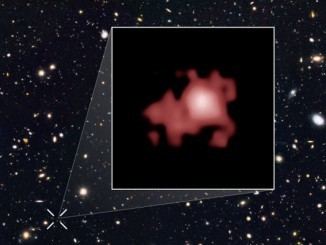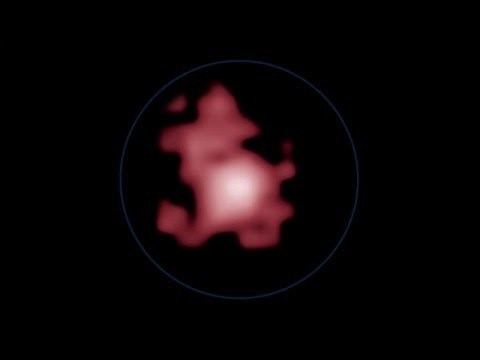Right ascension 12 36 25.46 Type Irregular | Declination +62° 14′ 31.4″ | |
 | ||
Redshift 7001110900000000000♠11.09+0.08−0.12 Helio radial velocity 295,050 ± 119,917 km/s (183,336 ± 74,513 mi/s) Distance ≈32 billion ly (9.8 billion pc) (present proper distance)≈13.4 billion ly (4.1 billion pc) (light travel distance) Similar MACS0647 JD, EGSY8p7, UDFj 39546284 | ||
Gn z11 the most remote galaxy ever seen in the universe
GN-z11 is a high-redshift galaxy found in the constellation Ursa Major. GN-z11 is currently the oldest and most distant known galaxy in the observable universe. GN-z11 has a spectroscopic redshift of z = 11.09, which corresponds to a proper distance of approximately 32 billion light-years (9.8 billion parsecs) from Earth.
Contents
- Gn z11 the most remote galaxy ever seen in the universe
- Gn z11 most distant galaxy discovered
- Discovery
- References

The object's name is derived from its location in the GOODS-North field of galaxies and its high Doppler z-scale redshift number (GN + z11). GN-z11 is observed as it existed 13.4 billion years ago, just 400 million years after the Big Bang; as a result, GN-z11's distance is inappropriately reported as 13.4 billion light years, its light travel distance measurement.

Gn z11 most distant galaxy discovered
Discovery

The galaxy was identified by a team studying data from the Hubble Space Telescope's Cosmic Assembly Near-infrared Deep Extragalactic Legacy Survey (CANDELS) and Spitzer Space Telescope's Great Observatories Origins Deep Survey-North (GOODS-North). The research team used Hubble's Wide Field Camera 3 to measure the distance to GN-z11 spectroscopically, by splitting the light into its component colors to measure the redshift caused by the expansion of the universe. The findings, which were announced in March 2016, revealed the galaxy to be farther away than originally thought, at the distance limit of what the Hubble Telescope can observe. GN-z11 is around 150 million years older than the previous record-holder EGSY8p7, and is observed (shortly after but) "very close to the end of the so-called Dark Ages of the universe", and (during but) "near the very beginning" of the reionization era.

Compared with the Milky Way galaxy, GN-z11 is twenty-five times smaller, has 1% of the mass, and is forming new stars approximately twenty times faster. With a stellar age estimated at 40 million years, it appears the galaxy formed its stars relatively rapidly. The fact that a galaxy so massive existed so soon after the first stars started to form is a challenge to some current theoretical models of the formation of galaxies.


